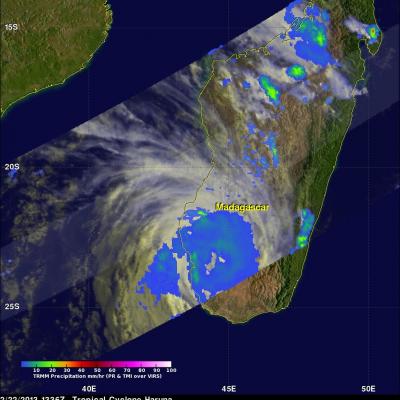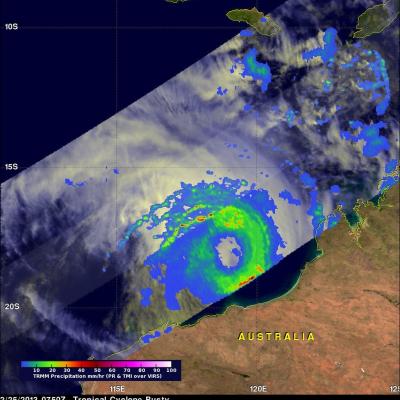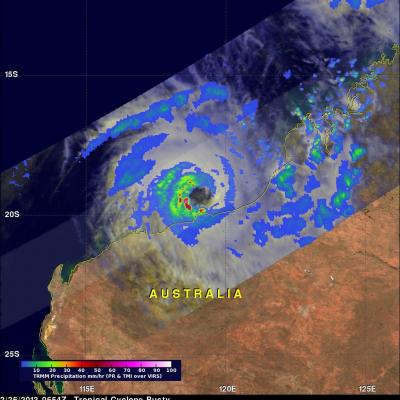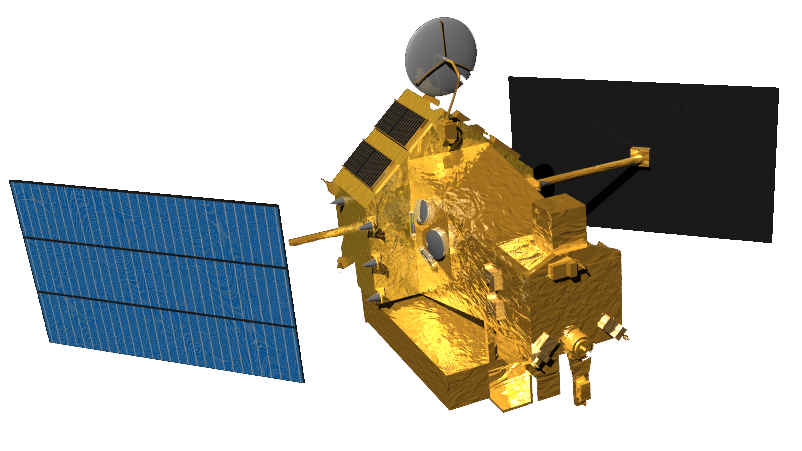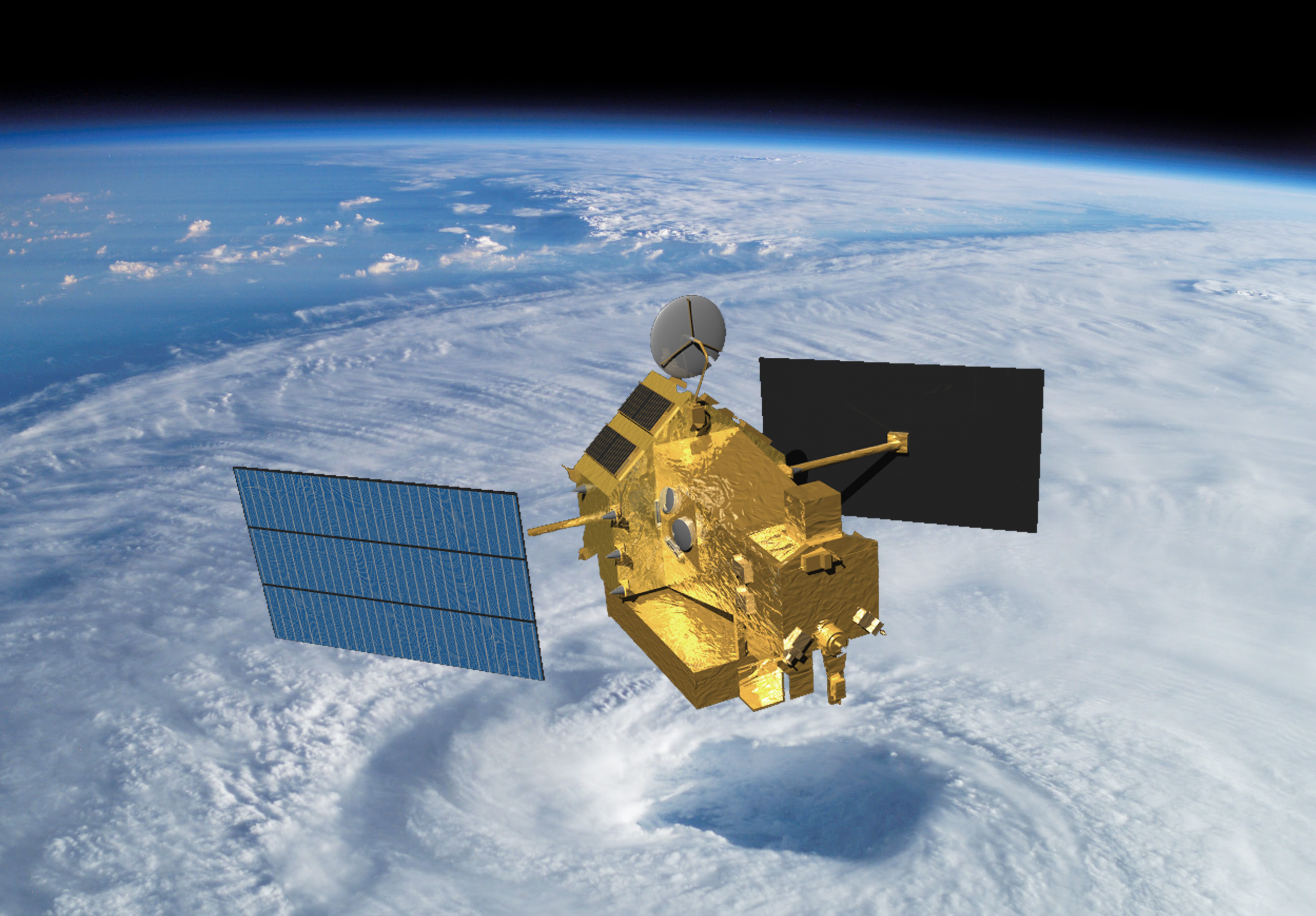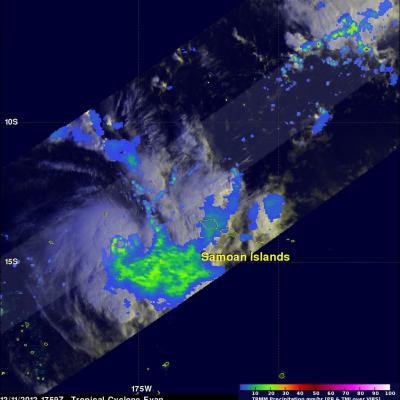Deadly Tropical Cyclone Haruna Departs Madagascar
Tropical cyclone Haruna has battered southwestern Madagascar with hurricane force winds and flooding rainfall for the past two days. The city of Morombe was heavily damaged and Haruna was reported to have killed six people. The TRMM satellite passed over Haruna yesterday on February 22, 2013 at 1336 UTC when the tropical cyclone was over southwestern Madagascar. TRMM passed almost directly above weakening tropical storm Haruna again today on February 23, 2013 at 0608 UTC. Haruna weakened from category one hurricane force yesterday to tropical storm force today. Today TRMM's Microwave Imager


